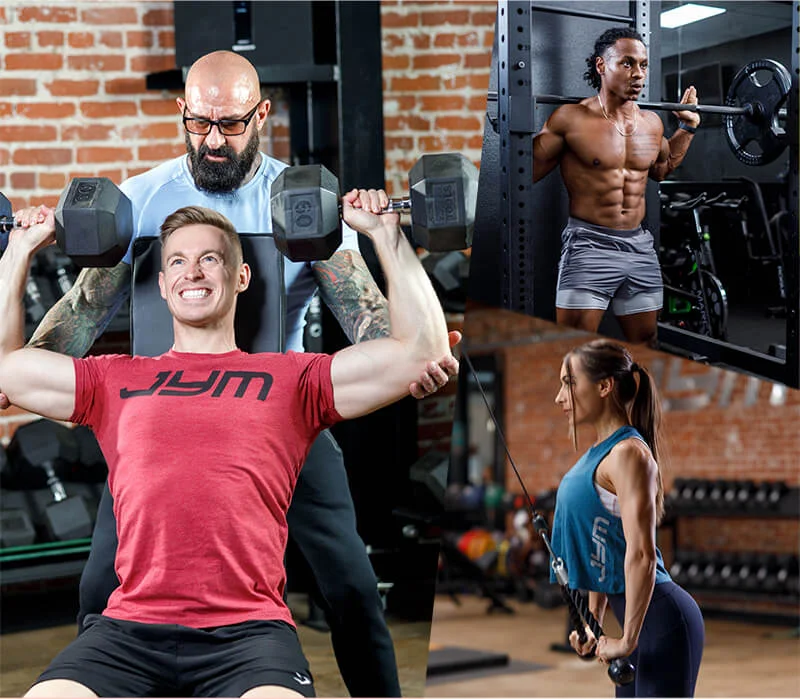When it comes to upper body training, the biceps are one of the most targeted muscles—and for good reason. Well-developed biceps not only enhance the appearance of your arms but also support functional movements like lifting, pulling, and carrying. Whether you’re a beginner or experienced lifter, including the right biceps workout in your training routine is essential for strength and size gains.
In this post, we’ll break down the best exercises for a complete biceps workout, along with tips to help you get the most out of every rep.
Why a Biceps Workout Matters
Your biceps consist of two heads: the long head and the short head. Both work together during pulling movements and elbow flexion. A balanced biceps workout should target both heads, ensuring full development and avoiding muscle imbalances.
Training your biceps improves:
Arm strength and endurance
Performance in compound pulling exercises
Grip strength
Aesthetics and muscle definition
Top Biceps Workout Exercises
1. Barbell Curls
Barbell curls are a classic mass-building biceps workout exercise that allow you to lift heavier weight and overload the muscle.
How to do it: Stand with a shoulder-width grip on a barbell, curl the bar upward by flexing your elbows, then lower it slowly under control.
2. Dumbbell Hammer Curls
Hammer curls emphasize the brachialis and brachioradialis, adding thickness to your arms and supporting overall biceps development.
How to do it: Hold dumbbells with a neutral grip (palms facing in) and curl them upward. Pause at the top, then return to the starting position.
3. Concentration Curls
This isolation exercise is excellent for developing the peak of the biceps and maintaining strict form.
How to do it: Sit on a bench, rest your elbow against the inside of your thigh, and curl a dumbbell with control. Focus on the squeeze at the top.
4. Incline Dumbbell Curls
Incline curls stretch the biceps through a greater range of motion, hitting the long head more effectively.
How to do it: Sit back on an incline bench, let your arms hang fully, and curl the dumbbells without swinging.
5. EZ Bar Curls
EZ bar curls are easier on the wrists than straight bar curls and still allow you to load the biceps heavily.
How to do it: Use the angled grips on an EZ bar to curl the weight up, then lower it under control for maximum tension.
6. Cable Curls
Cables provide constant tension throughout the entire movement, making this a great finishing exercise for your biceps workout.
How to do it: Use a straight or rope attachment, keep your elbows stationary, and curl the handle toward your shoulders, squeezing your biceps at the top.
Tips for an Effective Biceps Workout
Use proper form: Avoid swinging or using your shoulders. Focus on strict curls with full range of motion.
Train with intensity: Push close to failure, especially in the final sets of each exercise.
Control the negative: Slowing down the eccentric (lowering) phase increases time under tension and muscle growth.
Vary your grips and angles: Alternate between wide, narrow, and neutral grips to hit different parts of the biceps.
Don’t overtrain: Your biceps are involved in back workouts too. Train them directly 1–2 times per week for best results.
Sample Biceps Workout Routine
Here’s a complete biceps workout routine to maximize size and definition:
Barbell Curls – 4 sets of 8–10 reps
Incline Dumbbell Curls – 3 sets of 10–12 reps
Dumbbell Hammer Curls – 3 sets of 10 reps
Concentration Curls – 2 sets of 12–15 reps
Cable Curls – 2 sets of 15 reps (burnout)
Rest for 45–60 seconds between sets, and focus on contraction and form throughout the workout.
Final Thoughts
A solid biceps workout doesn’t require dozens of exercises—just the right ones done with intensity and precision. Incorporate a mix of compound and isolation movements, maintain good form, and give your muscles enough time to recover. Whether your goal is to increase arm size or improve pulling strength, consistent biceps training will help you achieve noticeable results.
Train smart, stay disciplined, and let your arms do the talking.






